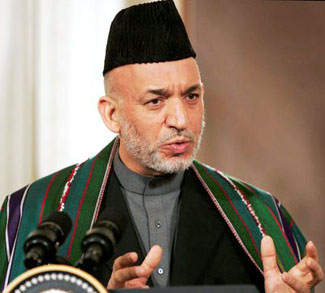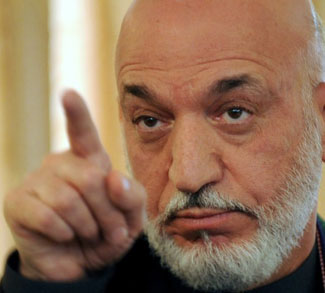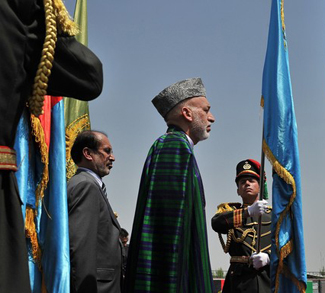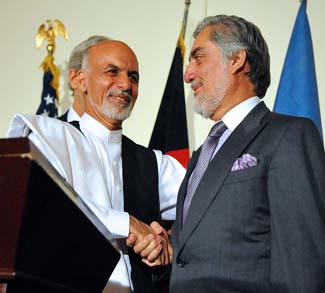The Taliban opened their first official overseas office in Doha this month, a move that many believed to signal the beginning of peace talks with the US and Karzai governments. However, tensions over the Taliban’s new political office have already boiled over such that the Karzai government has now threatened to withdraw from the process before it even truly began.
The conflict in Afghanistan has now entered its 12th year and vicious instances of violence are still occurring across the country on a daily basis. Violent attacks have killed more than 14,728 Afghan civilians in the last six years and over 3,340 coalition troops have been killed since the US-led invasion was launched in 2001. In addition to the loss of life caused by the conflict, the mission has cost the United States government over $345 billion and there is still no clear end in sight.
The reason that the International Security Assistance Force (ISAF) has had such limited success is because the coalition has been fighting the Taliban, a loosely organized fundamentalist group which uses insurgent and asymmetric tactics to accomplish its objectives. This sort of entrenched insurgency has been extremely successful in achieving its goals and this has prevented development, economic growth and stability from being realized in the country. After more than ten long years, the US-led ISAF force has been unable to quash or even dent the insurgency and, despite numerous tactical changes and policy rethinks, Taliban attacks have risen by 15% over the past year.
It’s clear that the situation in Afghanistan remains very dangerous for all parties involved.
This author takes the view that a military victory cannot be won in Afghanistan, and that the only hope for a negotiated peace lies in dealing with the more moderate elements of the Taliban. Negotiations with the Taliban will be effective in bringing an end to this decade old conflict for three reasons: firstly, by negotiating with the Taliban, the US and ISAF can split the insurgency between moderates and the extremist global jihadists. Second, talks will foster reconciliation and could bring all elements into the political process. Third, there is no military solution to the Afghan insurgency and, as a result, negotiations are necessary to resolve the conflict.
Engaging the Taliban in Negotiations Will Split the Insurgency
Engaging with the Taliban is an appealing option because it allows the United States to isolate the extremist elements from those who were compelled to join the insurgency under threat or for personal gain. This approach, which has the support of 77% of Afghans, could potentially isolate the most radical factions of the Taliban, allowing for a more focused counter-insurgency policy to be implemented. Fracturing the Taliban would also undercut the group’s manpower and ability to recruit, thus benefitting ISAF, as it would compromise the Taliban’s capacity to carry out attacks. This strategy can work effectively given that the Taliban are not centralized nor an exclusively ideologically-driven group but instead a fractured network of approximately 20,000–30,000 insurgents. Its members come from different backgrounds and have different goals; divisions that could be exploited by ISAF. The group’s organizational structure is also highly decentralized and command/control structures are far more developed at the local level than they are at the national level, meaning it may be possible to co-opt some of the smaller regional factions. In addition to the group’s decentralized nature, the Taliban is not a single entity with a single aim or even leader. Rather, the Taliban is a group of loosely-connected organizations that are fighting the occupation of Afghanistan by ISAF and against the country’s national government which they view as illegitimate.
Negotiations Will Foster Reconciliation
The Afghanistan conflict must eventually end through reconciliation and conflict-resolution processes, rather than military victory.
By negotiating with the Taliban, the US-led coalition and the Hamid Karzai government will be able to create a climate of reconciliation in Afghanistan, potentially bringing all elements including the Taliban into the political process. Such a move could bring an end to the conflict and bring peace to Afghanistan. However, reconciliation will only be effective if the following three actions are taken: the integration of the Taliban into national governance systems, a commitment by the US, the Afghan government and ISAF to create opportunities for Taliban fighters that are willing to reconcile and reintegrate, and finally, any and all reconciliation efforts are Afghan-driven and fully supported by all ISAF members, including the US. Unfortunately, to date no such comprehensive initiatives of this kind exist and until an effective reconciliation program is implemented, there will be little improvement in the security situation.
There Is No Military Solution to the Afghan Conflict
Lasting peace and stability will not be, and never has been, brought about by force alone.
After more than ten long years the Afghan conflict is still in full swing and the US and ISAF have expended massive amounts of blood and treasure fighting an opponent that is still very much capable of inflicting significant losses on its enemies. This engagement in many ways has weakened regional stability, and the financial costs for ISAF nations have been immense. A military solution to the Afghan conflict remains elusive for the following three reasons: first, the Taliban are simply too strong, entrenched, and dedicated an adversary to be overcome by force alone. Second, a military solution will not address the roots of the conflict. And finally, even if a military victory could be won, it would take too long and be too costly. In light of these three reasons the US and its allies need to acknowledge that their current policy is flawed and if they wish to have any success in their project to stabilize Afghanistan, they must rapidly initiate a concrete and viable negotiation and reconciliation plan.
The opinions, beliefs, and viewpoints expressed by the authors are theirs alone and don’t reflect any official position of Geopoliticalmonitor.com.




